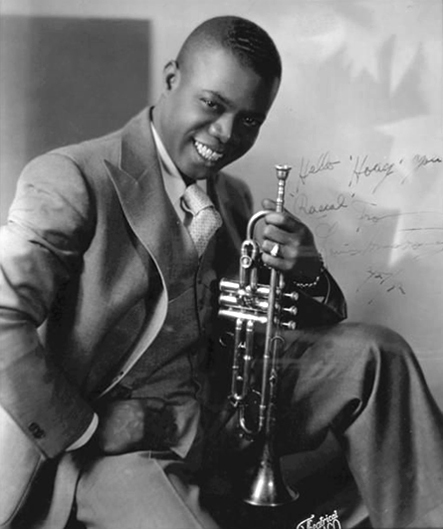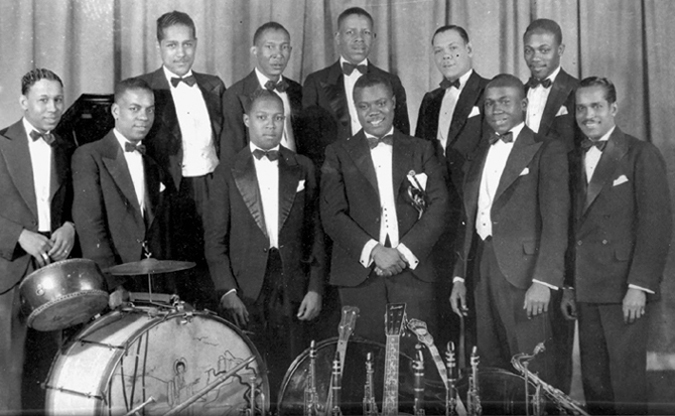Traditional jazz: “All of Me”, “When It’s Sleepy Time Down South”, “Body and Soul” and “I’m in the Mood for Love”
(Edited)
All of Me
Louis Armstrong and his Orchestra (1932).
In early 1930 Louis Armstrong fronted the Luis Russell Orchestra for a tour of the South, and since the Great Depression was especially hard on the jazz scene, afterwards he left for Los Angeles. There he led a band for ten months at Frank Sebastian’s New Cotton Club, attended by the Hollywood public, who could still afford a luxurious nightlife, while radio broadcasts connected with younger audiences at home. While going to record “Memories of You”, Armstrong and the group’s drummer Lionel Hampton found a vibraphone stowed away in the corner of the studio. Armstrong insisted that Hampton play it on the opening phrase of the song, and the latter became the first vibraphonist in jazz history. That same year Armstrong debuted as an actor in the drama film Ex-Flame directed by Victor Halperin.

Frank Sebastian at the entrance of his Cotton Club
In 1932 Armstrong switched from the “race”-oriented Okeh Records to its pop-oriented big sister Columbia label, for which he recorded the Top Five hits “Chinatown, My Chinatown”, “You Can Depend on Me” and “Love, You Funny Thing”, and the Number One hit “All of Me”, which can be found below. Later on he returned to Chicago, where he recorded a series of memorable sides including the number that would become his theme song “When it’s Sleepy Time Down South”, which can be found below, and also directed a band led by Zilner Randolph with which he toured all over the country. Then he toured with great success in England, Holland, Denmark, Sweden, Norway and France, his American career maintained by a series of archival recordings, like the Top Ten hits “Sweethearts on Parade”, “Body and Soul” and “Hobo, You Can’t Ride This Train”.

Louis Armstrong
When Armstrong returned to the United States in 1935 hired Joe Glaser as his manager, who signed him to the recently formed Decca Records, scoring the Top Ten hit “I’m in the Mood for Love”, which can be found below. Glaser also employed the Luis Russell Orchestra to support Armstrong, who toured with it for the next eight years.

Louis Armstrong and Joe Glaser

Louis Armstrong with the Luis Russell Orchestra
Armstrong is the third from the right in the front row


Body and Soul
Louis Armstrong and his New Sebastian Cotton Club Orchestra: Louis Armstrong (trumpet, vocals), Les Hite (conductor, alto saxophone, baritone saxophone), George Orendorf and Harold Scott (trumpet), Marvin Johnson (alto saxophone), Charlie Jones (clarinet, tenor saxophone), Luther Craven (trombone), Henry Prince (piano), Bill Perkins (banjo, steel guitar), Joe Bailey (tuba, double bass) and Lionel Hampton (vibraphone, drums) (1930).
0
0
0.000

Do you want to get involved? Do you want to support music and this project? Follow us to keep you updated and read our Introduction post!